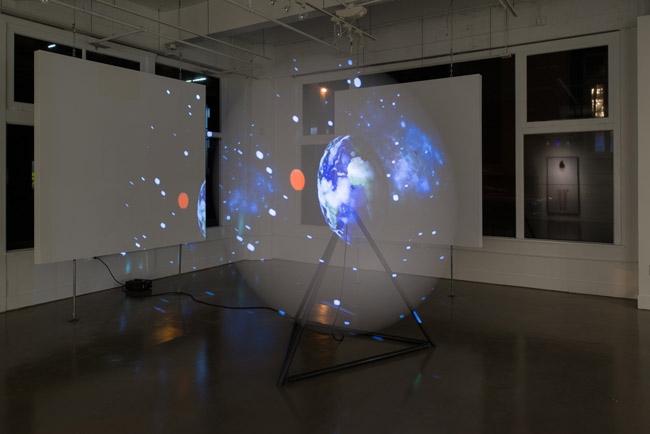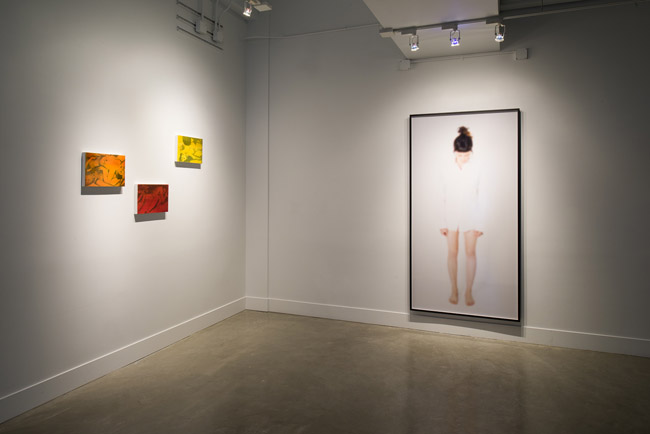November 6 — December 20, 2014




Gallery Wendi Norris is pleased to present the gallery’s first solo exhibition by Austrian artist Eva Schlegel. On view will be her latest rotor installation, Rotor (Morse), debuted at the Moscow Biennial earlier this year, as well as new large-scale photographs of blurred female figures, and a trio of paintings featuring found pornographic imagery. The artist traces the ephemerality and fruitlessness of codification, from an obsolete system of communication to the constructed image a woman creates for herself, through to gender relationships.
Rotor (Morse) is composed of a large, fan-like rotor that turns as a video of artificially constructed imagery of outer space is projected onto its surface. The video, Morse, features red flashes of Morse code that translate the following phrase expressed by Edgar Mitchell, NASA astronaut, as he describes what it is like to physically exist in space.
…that planets are just that, they are planets and you are not connected to anything anymore…
The circular red flashes conjure notions of exploding stars and planets or SOS signals from deep space, and the constant motion of the rotor and whirring noise it creates both contribute to a sense of unease.
Schlegel moves from the existential experience of human relationships with space into one’s understanding of the everyday in her photographs and paintings. Both are photographic representations that shift toward open-endedness as identities are obfuscated. While one layer presents information, another layer conceals the meaning—a representation of the loss of control and loss of identity that we all experience on personal and collective levels.
Schlegel has been working with blurred female figures for 12 years and describes these works in the following manner.
“Every work has its own background. Like experiences or things one can no longer remember clearly…Like a film at the back of the brain, something not clearly remembered but which is still inscribed in the brain…And these images of women are coded like a film that’s blurred in the background of the brain, that has validity as information concerning ideals of beauty but which can no longer be deleted.”*
Schlegel’s paintings are based on vernacular pornographic photography from the 1960’s that she found at a Viennese brothel. The subjects display imperfect bodies and the compositions feel thoroughly amateur. The male – female interactions are not staged for her lens but are rather repurposed by the artist. She rephotographs the photos and completes the works by adding thick layers of lacquer to coat the surfaces.
Over the past two decades, Schlegel has become known for her works in diverse media that reject the fixedness of the image as well as the constancy of its meaning. Film and photography are a constant presence in her practice, whether they are the raw media employed or a component of the medium as in her pornographic paintings. Throughout, she engages with the structures of perception to examine the relationship between ambiguity and abstraction.
